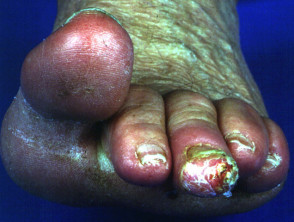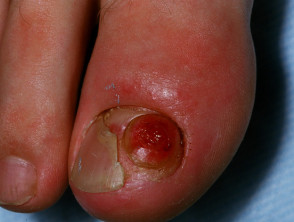What is subungual exostosis?
Subungual exostosis is an outgrowth of bone from the tip of the toe or finger. This happens below the nail hence the term “subungual”. It is a benign tumour derived from the bone and cartilage. Dupuytren first described the condition in 1817.
What causes subungual exostosis?
The cause is unknown. Constant irritation to the bone has been proposed as a possible causative factor. Previous trauma and long-standing infection may contribute. There are two inherited conditions that can manifest as subungual exostosis: multiple exostoses syndrome and multiple exostoses-mental retardation syndrome.
What are the clinical features of subungual exostosis?
The most common site for the lesion is on the great toe, usually on the inner or medial aspect. Less commonly subungual exostosis can occur on the fingers, most commonly on the index and middle fingers.
Subungual exostosis may occur at any age but half of the reported cases tend to occur by 20 years of age. Women are more commonly affected.
A firm nodule develops below the nail bed and, as it grows upwards, the nail plate separates from the bed (onycholysis) often causing pain. The lesion usually grows slowly over weeks to months.
Subungual exostosis
What investigations should be done?
It is important to perform X-rays of the lesion to confirm its bony origin. Biopsies are rarely required.
Differential diagnosis of subungual exostosis
Lesions in this region that can appear similar to subungual exostosis include subungual verruca (viral wart), pyogenic granuloma, osteochondroma, amelanotic subungual melanoma and glomus tumour.
How is subungual exostosis treated?
Surgical removal of the lesion is the treatment of choice. This is usually done under local anaesthetic of the digit, known as a "digital block”. The tumour is completely removed and the underlying bone is curetted (scraped clean) to prevent future recurrence.

